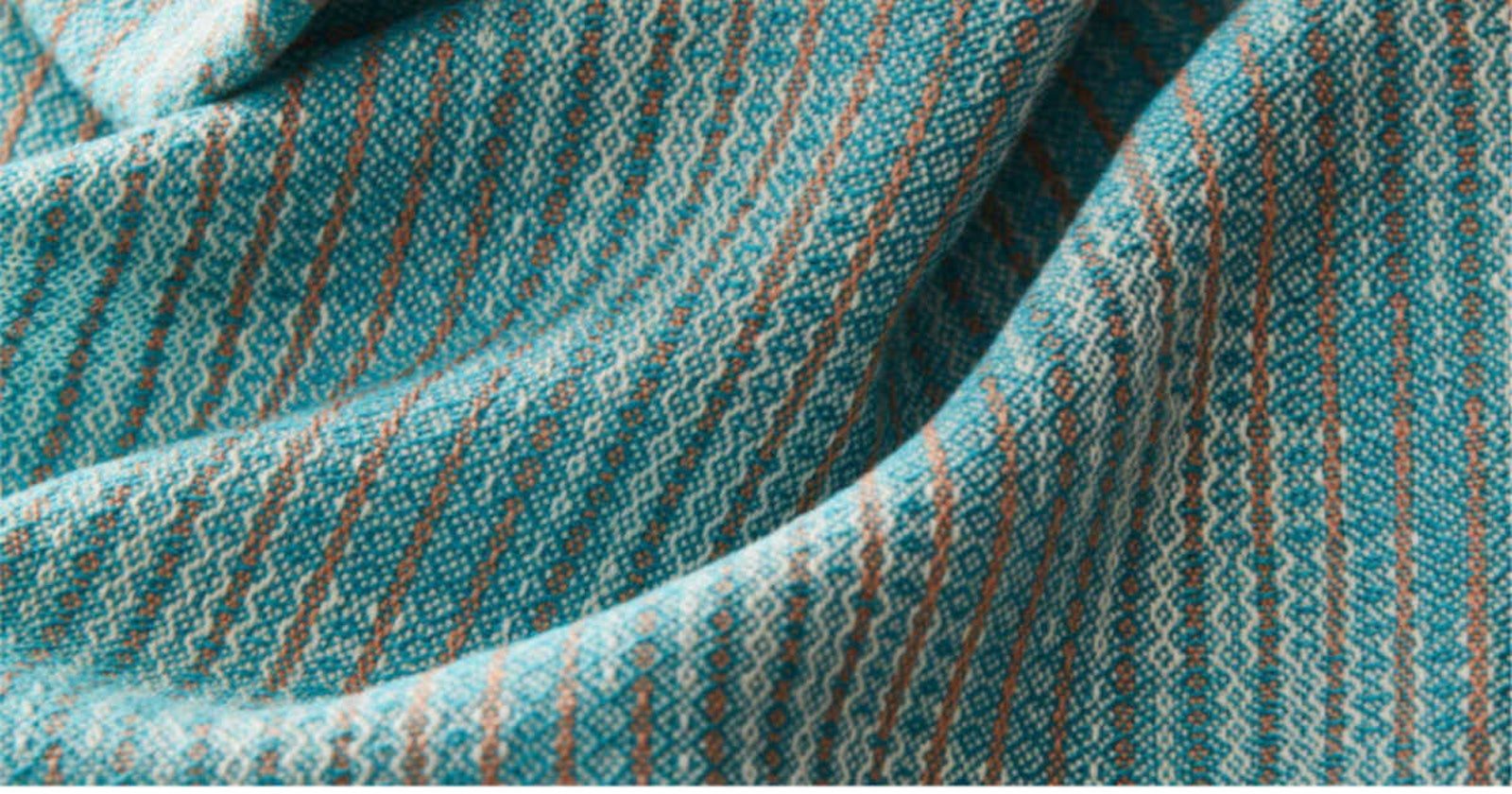I love weaving that boldly proclaims its complexity—the sorts of projects that make weavers and nonweavers alike ooh and ahh. Deflected doubleweave, for example, is bold and loud in all the best ways, a bit like the Dolly Parton of weaving. But I also have a special fondness for weaving that appears simple at first glance, but when you look closer, a level of complexity is revealed. Sandra Hutton’s A Winter Confection scarf from the January/February 2019 issue of Handwoven is precisely that kind of project. At first glance, it seems like simple twill lines, but when you look closer, you’ll see waves of pattern dancing along the scarf. Here’s what Sandra says about her design:
Sandra Hutton’s A Winter Confection scarf.
Designer Sandra Hutton’s Statement
For this scarf, I chose a yarn with a unique combination of silk and retted bamboo that I had never used before. Resilience is 60% bombyx silk and 40% retted bamboo. Unlike most bamboo yarns (commonly called bamboo rayon), retted bamboo is processed like linen and other bast fibers. The bamboo gives the yarn a little more body than would be expected with pure silk, and I immediately noticed less static electricity coming from the yarn than with rayon bamboo. If the 60/2x2 designation seems confusing, it’s helpful to think of the yarn as similar to 30/2 silk.
Most of the warp in this scarf is natural in color, but the peach color was specially dyed. I had just attended the Edgar Degas exhibit at the Denver Art Museum and wanted to do something with the peach/turquoise complementary colors that Degas used in the dresses of many of his ballet dancers. Treenway Silks’ dyers produced light and medium values of the peach and turquoise for me to experiment with, and I sampled both. Although I thought I would like the medium values of both colors used together, the lighter-value peach in the warp with the darker turquoise in the weft looked best.
Both the threading and the treadling are advancing twills. I sampled setts of 30, 33, and 36 ends per inch and settled on 33. I also sampled what to do with the fringe. I almost always hemstitch both ends of my scarves and shawls on the loom before and after weaving, and I chose to do that for this project as well. In general, I’m not fond of “barber poles” in twisted fringe, but after trying several combinations, I decided that the two light values of warp worked well together.
Happy Weaving!
Christina
Project at a Glance
PROJECT TYPE: 8-shaft.
STRUCTURE: Twill.
EQUIPMENT: 8-shaft loom, 11" weaving width; 12-dent reed; 1 shuttle and bobbin.
YARNS: 60/2x2 Resilience (60% bombyx silk/40% bamboo; 8,200 yd/lb; Resilience; Treenway Silks).


